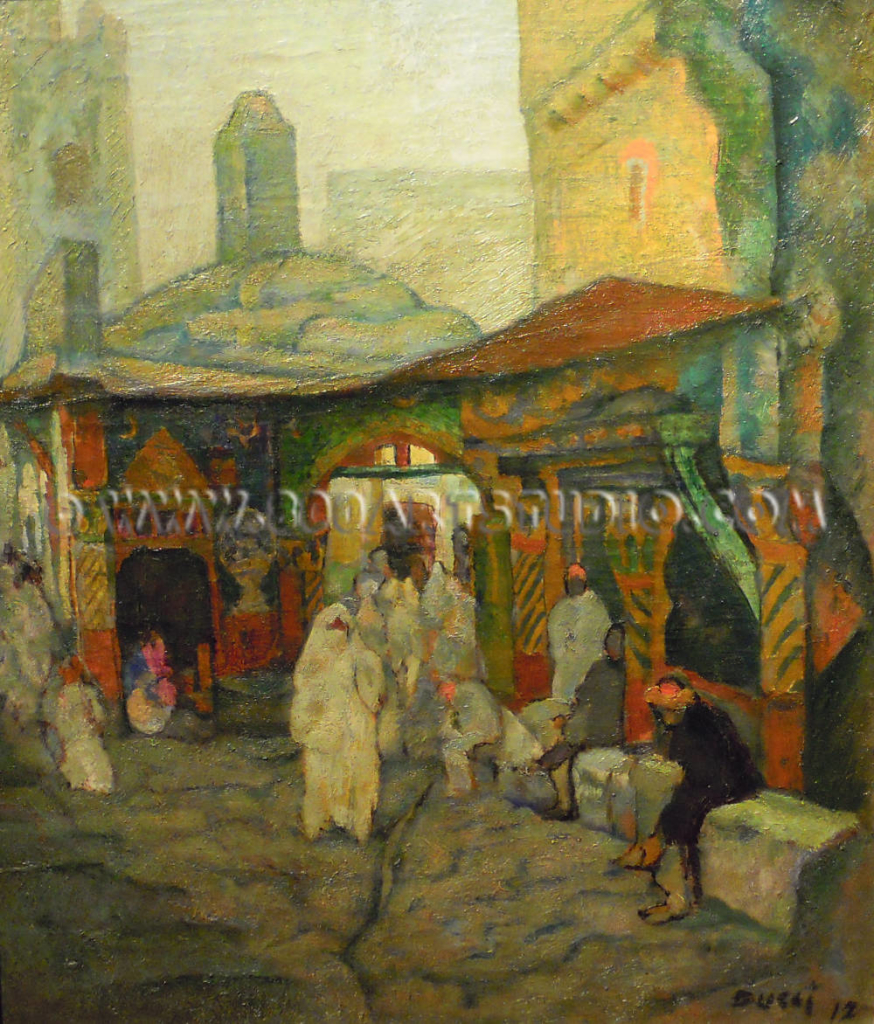Anselmo Bucci was born in 1887 in Fossombrone in the district of Pesaro. Even though he studied Classics, right from a tender age he showed a talent for drawing and, when his parents moved near to Florence, he was taught by the artist Francesco Salvini.
In 1904 the family settled in Monza and so the boy was able to study for a year at the Accademia di Belle Arti di Brera, but he did not follow up this educational experience and in 1906 he left Italy for Paris where he came vis-a-vìs with the Parisian avant-garde, met fellow Italian artists such as Severini and Modigliani, and made friends with Picasso, Utrillo and Apollinaire. In 1907 he showed a painting at the Salon, but these Parisian years were most important for his love of engraving techniques – etching and dry point that enabled him to fully develop his themes characterised by movement.
On the outbreak of war in 1915 he returned to Italy and he enlisted in the same battalion as several Futurist artists such as Martinetti, Boccioni, Sant’Elia and Carlo Erba. In 1914 he won the silver medal at the Mostra dell’Incisione (Exhibition of Engravings) at Florence. In 1917 in Paris he published pictures of war scenes entitled “Croquis du Front Italien”. In 1919 he printed twelve lithographs entitled “Finis Austriae” again showing events from the war. At the end of the war he lived between Milan and Paris and he dedicated his time completely to his art with personal exhibitions, exhibiting at all the most important Italian and French shows, in Belgium, Holland and England.
In 1922, he established the group “Movimento del Novecento” (20th century Movement) a joint venture with the artists Sironi, Funi, Oppi, Malerba, Dudreville and Marussig. Their aim was to return to figurative art in contrast with the growing extremism of the Avant-gardists. In 1925 he worked on the illustration of the first edition of Kipling’s The Jungle Book producing eight dry point plates.
In the early 30’s he lived in Bucci, Trieste, where he worked on the furnishing of the steamships for the Trieste Navigazione Libera, at the same time he continued to work on many book illustrations.
During the second European war he adapted to being a war artist recording the events of the war as he had done previously. Indeed the engravings depicting battles of the Marines and the Air Force belong to this period. In 1945, following the bombing of his house in Milan, he returned to Monza to his father’s home where he remained until his death.
Written by: Cecilia Iacopetti – Translated by: Catherine Biggerstaff
© Studio d’Arte dell’800


